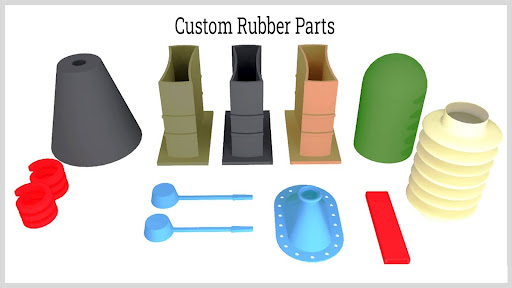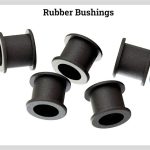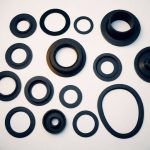Introduction
In the product design and manufacturing industry, the use of rubber overmolding stands high and has become a significant technique that massively changes the process of conceiving an idea, engineering the product and producing them.
This new method of production involves the adhesive layer made of rubber to a substrate/component of your choice, as a result, you will get an impervious and strong connection, which will be much more effective in terms of functionality, appearance, product innovation, and quality.
Rubber molding has quite diversified applications – starting from consumer electronics and automotive parts to other products – the influence of this technology. Thus, the sphere of design flexibility, durability, and user experience is growing very fast.
Understanding Rubber Over Molding
Rubber over molding is a specific manufacturing process comprising mixed injection molding or two-shot molding which solely serves the purpose of creating a single integrated product component out of different materials.
Generally, layering is done through a sequence of injections, with the first being the base substrate which is usually made of thermoplastic materials such as polypropylene or ABS, and the second injection of rubber materials such as silicone or TPE for the protective and functional outer layer.
Discover the benefits of rubber over molding in enhancing product durability and functionality. Click here to learn more about our rubber over molding solutions.
Key Benefits of Rubber Over Molding
Enhanced Durability
Another benefit that rubber has to offer in respect of molding is related to improvement of product durability. This rubber layer reduces the impact force, helps to absorb the shock energy and ensures that the tire remains intact against the environmental factors such as protection against moisture, chemicals, and UV rays. Such durability is translated into long product life and only reddened requirements for maintenance.
Improved Ergonomics and Grip
Rubber over molding presents a better fit when it comes to both ergonomics and the grip case; as a result, the products’ operability increases, becoming more comfortable and user-friendly. Handling these small products exposes the user to the risk of dropping or even being injured, thus providing them with a firm grip is particularly crucial for safety and efficient operations.
Seamless Integration of Components
In addition to multiple systems casting in a couple of molding parts, rubber overmolding offers the integration of these systems without any external assembly. This as well turns out to be a very straightforward approach, minimizes the chances of failures and results in high quality product reliability.
Customized Design Options
Rubber gives huge variation options as veneer in the sense that there is a unique design variety of colors, all kinds of surfaces and textures. Such flexibility thus gives designers the chance of creating the most good looking product with the brand identity associated with the performance and needs of the end user.
Noise and Vibration Dampening
The inherent properties of rubber ( such as its ability to bend and absorb shock) make these items dampen out unwanted noises in automobiles. This is seen as highly advantageous for automotive and hand held devices as well as the machine where elimination of noise and vibration are indispensable for consumer comfort and the operational efficiency of the products.
Applications of Rubber Over Molding
Consumer Electronics
Multifunctional rubber over molding is being widely applied by vendors of consumer electronics and holds in such products as smartphones, tablets, and remote controls. Shock-absorption is the main function of vulcanized rubber providing protection against external impacts, enhancing grip, and adding an interesting feel to the devices.
Automotive Components
Rubber over molding is used in the auto industry as the basic element of steering wheels, dashboard controls and door handles. The layer of rubber increases the tactile feedback, contributes to a longer lasting life, and gives the driver a more comfortable experience.
Medical Devices
Medically usable devices like this can stay biocompatible, sterilizable and adaptable to human anthropometrics. Products like instrument deals, handles and wearable designs process using rubber over molding for the purpose of functionality and the feel of the human operator.
Industrial Tools and Equipment
Large spells of rubber like over riders are usually used for such tools and equipment. These over riders help to improve the durability, grip and security features of the tools such as power tools, hand tools, and machine components. The elastic pad can therefore protect the hands from electrical flows, and it is also used to improve the precision
Minimize vibration and noise in your machinery with our reliable rubber vibration mounts. Click here to see our rubber vibration mounts selection.
Design Considerations for Rubber Over Molding
When incorporating rubber over molding into product design, several key considerations should be taken into account to ensure optimal performance and durability:
Material Compatibility
This aligns well with the need to secure a strong interaction of base materials and rubber ones as they serve as a solid base and provide functional characteristics. Issues of durability, corrosion resistance, and exposure environment need to be taken into account during the course of material selection.
Mold Design and Tooling
The rubber over mold process being a complex manufacturing technique necessitates the use of precision and expertise in the design of molds and tooling. It is crucial to ventilate, gate and position the outer and inner bitter wells in order to obtain homogeneous material distribution and to minimize product defects like air traps and flash.
Optimize your production processes with our precision-engineered rubber rollers. Click here to discover our rubber roller solutions.
Bonding Strength
The bond between the base substrate and the rubber particle is the essential test of dimensional stability of the product. The components of bond strength, namely surface preparation, the ability to rely on material adhesion, and molding parameters like temperature adn pressure are also a factor to consider.

Product Performance Testing
The performance verification phase is an integral part critical in the evaluation of the mechanical tests, environmental exposure tests, and durability tests comes by to be the best proof of functionality and reliability of rubber over molded products. Product testing should mimic the real world and scrutinize under the conditions to ensure that product performance meets or possibly exceeds your expectation, ensuring the actual value of your money.
Future Trends in Rubber Over Molding
The future of rubber over molding looks to build upon the revolution that is continuously driven by the inventions and technological developments aimed at achieving a better design as well as sustainability goals. Key trends shaping the future of rubber over molding include:
Advanced Materials
The growing technologie developments of new rubber compounds, bio-based materials, and sustainable polymers will expand the design scope while at the same time reduce its carbon footprint.
Integrated Sensors and Electronics
The novel combination of integrated sensors, electronic, and smart functions that are now core to rubber over-molded components will lead to advanced functionality, connectivity, and end user interaction in various arenas.
Additive Manufacturing
The merging additive manufacturing performance with rubber vulcanization operation will earn the time for the speedy samples, freedom for customization, and cost-reducing approach for products with complex shapes.
Circular Economy Practices
Implementing the circular economy, such as material recycling, re-using and sustainable manufacturing activities, rubber molding industry will therefore go in the route of sustainability.
Experience flexibility and durability with our high-performance rubber bellows. Click here to view our rubber bellows options.
Industry Trending Topics
In addition to the advancements and innovations in rubber over molding, several industry trending topics are shaping the manufacturing landscape:In addition to the advancements and innovations in rubber over molding, several industry trending topics are shaping the manufacturing landscape:
Industry 4.0 and Smart Manufacturing
Impact of Industry 4.0 applications makes possible the implementation of the Internet of Things (IoT), Artificial Intelligence and automation systems, which in turn are transforming the way manufacturing processes are (turning them dynamic and efficient). Also they are producing data in real-time thus enabling more useful decision-making.
Sustainable Manufacturing Practices
In recent times, environmental sustainability campaigns that include usage of renewable materials, energy-saving processes, and efficient waste management plans are experiencing surges in popularity. They are being driven by the new trend of consumers interested in environmentally friendly merchandise.
Digital Twin Technology
Digital twin technology is the innovation erupting in the product development and production world: virtual replicas of physical products are created, for hitch-free maintenance, optimization, and innovations.
Supply Chain Resilience
One of the lessons the COVID-19 pandemic has taught manufacturers is the need to have a supply chain that is able to weather the storms. This has led to the adoption of agility, the diversification of their sources and the use of digital tools for monitoring the risks on supply chains and visibility.
Circular Economy Initiatives
Circular economy concepts, which concentrate on resource productivity, product durability, and closed loops in production scenarios, are working to overhaul the competitors’ operations of produced and recycled products, driving a transition towards a more sustainable manufacturing environment.
Conclusion
In a nutshell, rubber over modeling is a rich vein for contemporary design by providing increased toughness, utility, and appearance. Polymer-rubber materials have been successfully incorporated in various consumer applications like microwave ovens, automobiles and medical devices, today, it is a guarantee of quality and user satisfaction therefore, the word ‘seamless’ is synonymous to it.
With the technology development, the outlook for the rubber overmolding at present holds tantalizing prospects to the innovative design idea, the sustainability practices, and improved customer experience.
Manufacturers should not only follow industrial trends, but they also need to be proactive to keep pace with the market needs.
For the manufacturers who want to capture the huge potential of rubber over molding envisage the development of products and longevity, embracing industrial trends and staying ahead of the market demands will be imperative.


